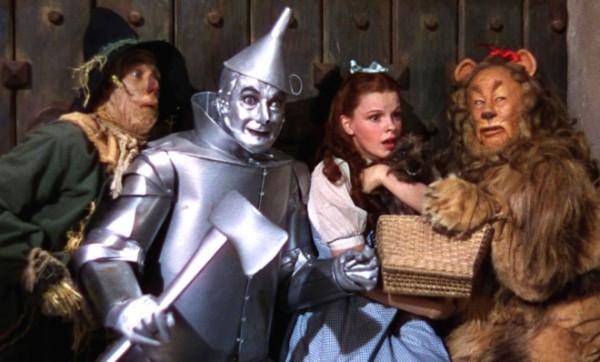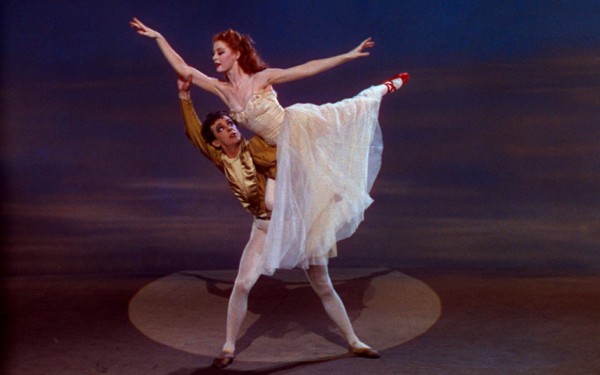Technicolor was all the rage when it was introduced in Hollywood films decades ago. Moviegoers who had grown accustomed to the reality of black and grey gladly embraced the rainbow of vibrant colors.
In a tribute to this ground-breaking technology, which revolutionzed the industry, the Toronto International Film Festival is presenting Dreaming in Technicolor, a program of 27 movies showcasing this seminal development.

Featuring films ranging from The Wizard of Oz to Lawrence of Arabia, the festival will run from June 19 to July 13 at the TIFF Bell Lightbox.
One of the pictures in the lineup, The Red Shoes, is a 1948 British classic directed by Michael Powell and Emeric Pressburger. It’s a prime example of how color can enhance a movie’s vitality.
A stylized film featuring superior production values — daring cinematography and expressive sets — it gives a viewer a rare behind-the-scenes glimpse of the world of professional ballet.
The principals are Boris Lermontov (Anton Walbrook), the Russian-born founder and director of a ballet company; Victoria (Vicky) Page (Moira Shearer), an immensely talented British ballerina who’s called upon to make a crucial decision, and Julian Craster (Marius Goring), a British composer and conductor whom Lermontov hires to score a new ballet based on a story by Hans Christian Andersen.
Unfolding mainly in London and Monte Carlo, the film is lush and sumptuous, containing what is probably the longest ballet sequence in the history of cinema. Even viewers who normally wouldn’t describe themselves as ballet aficionados will probably be impressed by its scope and breadth.
Victoria, a flaming redhead, is utterly dedicated to her craft. Lermontov, a connoisseur of emerging talent, spots her potential and chooses her and another dancer to join the company on a tour of France. Before they embark on the trip, he warns her that she can only be a great dancer if she makes difficult sacrifices in her personal life.

Victoria acquits herself well on the tour, prompting Lermontov to offer her the lead role in The Red Shoes, a ballet whose score will be composed by Craster. Lermontov discloses that his colleagues don’t necessarily share his opinion of her talents, but he assures her he has enormous confidence in her abilities.
The film gives us an insider’s view of the gruelling dress rehearsals in the runup to the first show. The chaos and disorder will soon give way to art at its purest level.
The extended scene in which Victoria electrifies an audience with her graceful moves is one to behold, savour and remember. The exquisite sets and the brilliant choreography add to the magic.
When Lermontov learns that Victoria and Craster are lovers, he’s annoyed and bitterly disappointed. He warns her that she will fall short of attaining greatness if she’s sidetracked by “foolish flirtations.”
With the moment of truth upon her, Victoria reaches an agonizing fork in her career. As far as Lermontov is concerned, she can’t be a star unless she breaks off her relationship with Craster.
Torn by indecision, Victoria cries, “I don’t know, I don’t know.”
Slender and alluring, Shearer turns in a subtle and thrilling performance as an up-and-coming actress and dancer. Goring, his hair usually askew, is persuasive as a temperamental figure. Walbrook, a model of sartorial elegance and refinement, is the quintessential European bon vivant.
Thanks, in part, to their stellar performances, The Red Shoes avoids the stigma of being dated. It remains timely and absorbing, a film for the ages.
***
Highlights of Dreaming in Technicolor include:
- 4K Digital restorations of Jack Cardiff’s rich and vivid The African Queen (1951), and the Powell and Pressburger masterpiece, The Tales of Hoffman (1951).
- Restored 35mm prints of the visual tour de force The River (1951), and the first feature shot entirely in the newly developed three-strip Technicolor system, Becky Sharp (1935).
- Archival 35mm prints of Rear Window (1954) and The Wizard of Oz (1939) — both struck during the last revival of the Technicolor dye-transfer process in the 1990s.
An illuminating series of on-stage events includes screening introductions from Grover Crisp, head of film restoration at Sony Pictures, on Lawrence of Arabia, Saturday, June 20 at 2 p.m.; legendary filmmaker Norman Jewison on Fiddler on the Roof (1971) on Sunday, June 28 at 3:30 p.m.; Scott Higgins, Professor and Chair of the College of Film and the Moving Image at Wesleyan University and author of Harnessing the Rainbow: Technicolor Aesthetics in the 1930s on The Adventures of Robin Hood (1938), Saturday, July 4 at 4 p.m.; and Bob Hoffman, Vice-President of Marketing and Public Relations at Technicolor on The Red Shoes (Saturday, July 11 at 6:30 p.m.) and The Tales of Hoffmann (Sunday, July 12 at 6 p.m.).
Contemporary cinema artist Guy Maddin gives a Technicolor Master Class of Douglas Sirk’s exquisite 1950s melodrama, Magnificent Obsession (1954) on Saturday, July 18 at 6 p.m.
